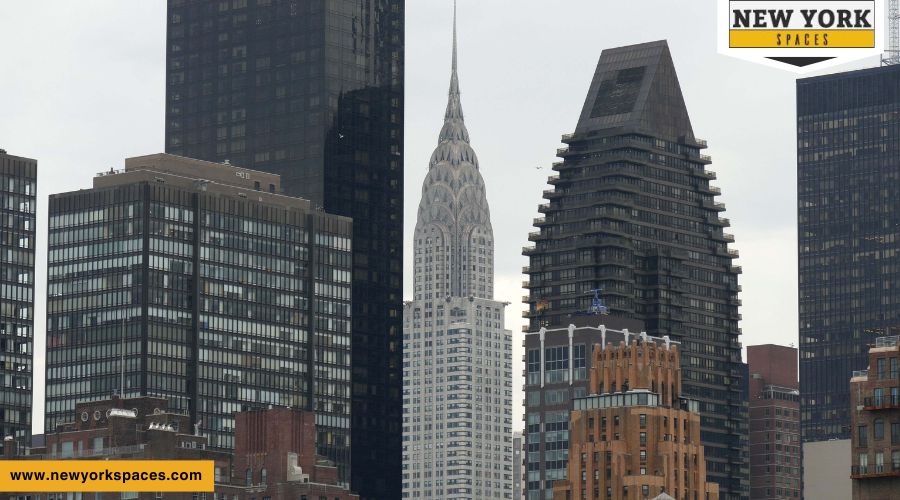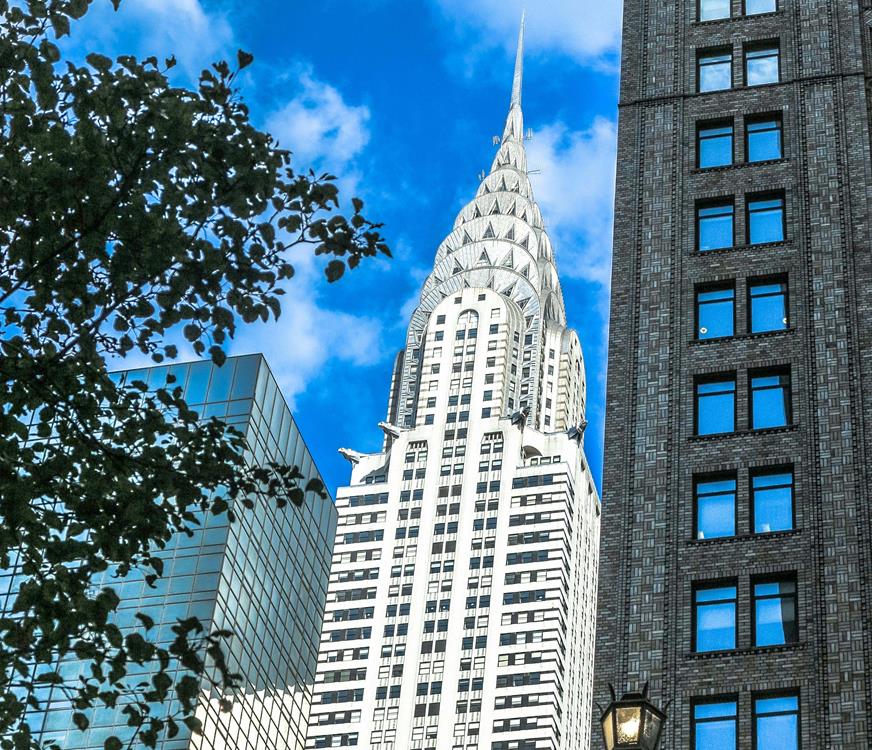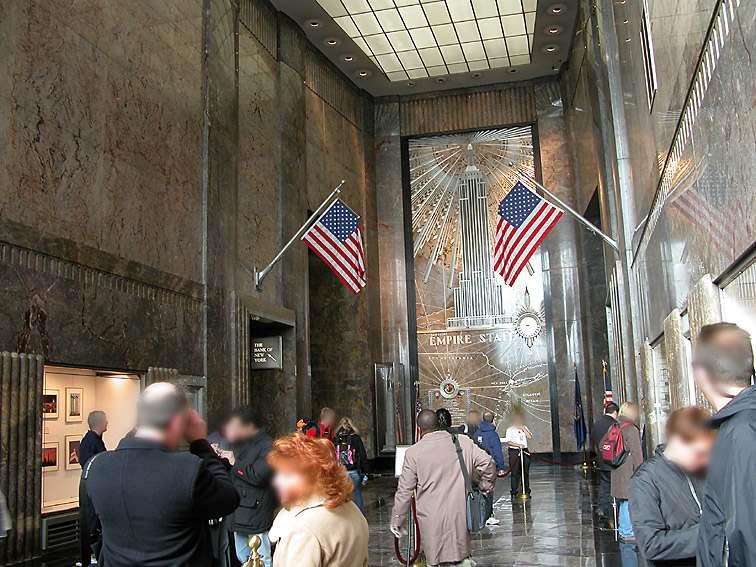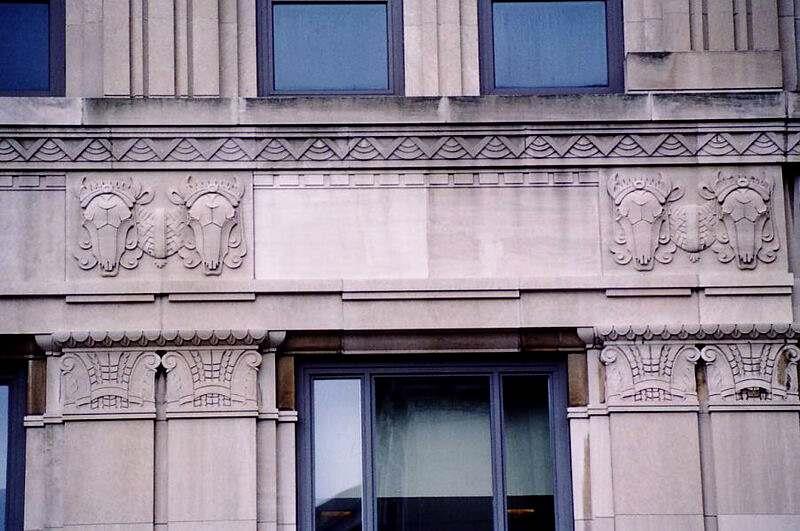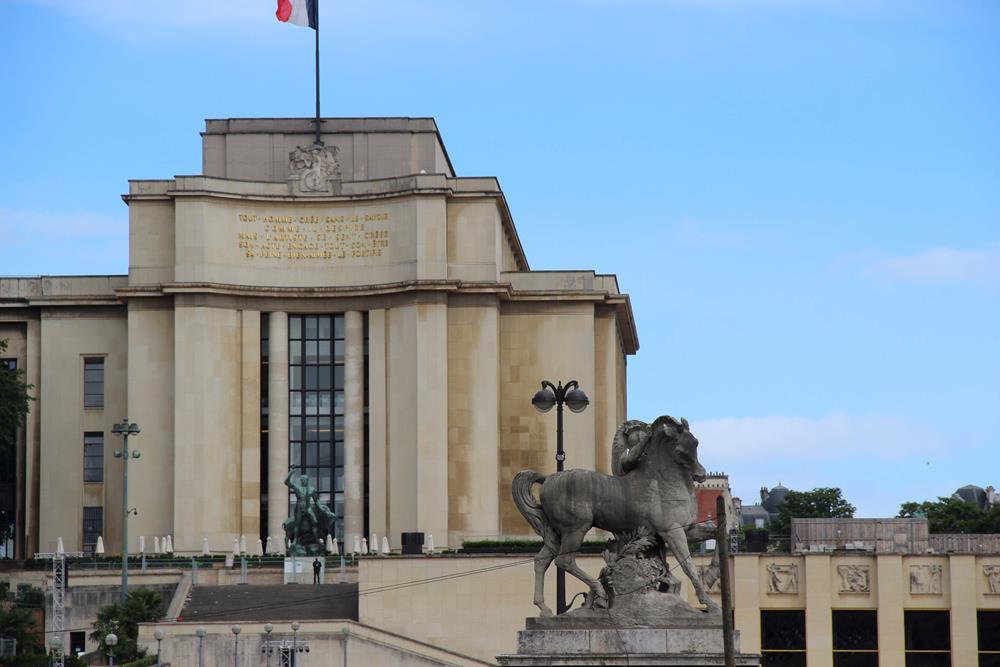In the roaring twenties and thirties, a new design movement swept across the globe, leaving a lasting impact on buildings, furniture, and even everyday objects. Known as Art Deco, this style combined modernist styles with fine craftsmanship and rich materials. Despite its age, Art Deco remains one of the most recognizable architectural styles, celebrated for its bold geometric shapes, lavish materials, and intricate details. This blog post will summarize Art Deco architecture’s four key stylistic characteristics.
1. Geometric Forms and Symmetry
Art Deco architecture’s heart places a strong emphasis on geometry and symmetry. This style is known for its clean lines, sharp angles, and precise forms, which create a sense of order and balance.
Bold Geometric Shapes: Art Deco buildings are marked by various geometric patterns. Zigzags, chevrons, and pyramidal forms are just a few examples that contribute to these structures’ dynamic yet orderly appearance. Such shapes not only define the overall silhouette of buildings but also detail their facades and interiors.
Iconic Examples:
- The Chrysler Building in New York City, with its tiered crown and triangular windows, is a prime example of geometric design in Art Deco architecture.
- The Guardian Building in Detroit showcases intricate tile work and ceiling designs that reflect geometric patterns, emphasizing the style’s attention to detail and symmetry.
Cultural Influences: The geometric motifs prevalent in Art Deco architecture were inspired by various sources, including the bold lines of Cubism, the colorful patterns of Fauvism, and especially the forms of ancient cultures. For instance, the fascination with Egyptian motifs surged after the discovery of Tutankhamun’s tomb in 1922, while Mesoamerican pyramids influenced the stepped profiles seen in many Art Deco buildings.
This focus on geometric forms and symmetry not only defined the aesthetic of Art Deco but also reflected the era’s enthusiasm for technological advancement and the machine age, showcasing an ideal blend of art and industry.
2. Rich and Exotic Materials
A hallmark of Art Deco architecture is its use of luxurious materials that convey a sense of sophistication and glamour. This choice of materials enhanced the visual appeal of buildings and symbolized the era’s technological progress and cultural richness.
Variety of Luxurious Materials: Art Deco architects and designers incorporated many high-quality materials into their creations. These included:
- Marble: Used in floors, walls, and columns for its elegant and timeless appearance.
- Ebony and Ivory: Often used in furniture and decorative panels, adding contrast and refinement.
- Chrome: Employed in fixtures and fittings, reflecting the era’s fascination with industrial materials and finishes.
Contribution to Opulence and Modernity: The choice of these materials played a crucial role in defining the Art Deco aesthetic. They not only added a layer of luxury to the buildings but also highlighted the modern ethos of the Art Deco period, characterized by an embrace of innovation and a break from traditional design constraints.
Iconic Examples:
- The Empire State Building’s lobby in New York City showcases exquisite marble and chrome finishes, creating a majestic entrance that exemplifies Art Deco opulence.
- The Palais de la Porte Dorée in Paris features an abundance of exotic woods, marble, and gilt, demonstrating the style’s penchant for rich materials and intricate craftsmanship.
Through these materials, Art Deco architecture achieved grandeur and extravagance that continues to awe and inspire, embodying an era celebrating the fusion of art, technology, and luxury.
3. Ornamentation and Detailing
Art Deco architecture is renowned for its detailed ornamentation, which adds depth and character to its geometric forms. A diverse range of motifs and exquisite craftsmanship characterizes this decorative flair.
Diverse Inspirations for Ornamentation: The decoration found in Art Deco buildings draws from several sources, creating a rich visual tapestry. Key influences include:
- Nature: Floral and animal motifs, streamlined for a modern look.
- Machinery: Gears, wheels, and other elements reflecting the industrial age.
- Avant-Garde Art: Abstract and stylized forms borrowed from contemporary painting and sculpture.
Balancing Decoration with Streamlining: One of the unique aspects of Art Deco is how it combines intricate detailing with the sleek lines and forms of modern design. This balance ensures that buildings are ornate and elegantly proportioned, avoiding clutter while showcasing elaborate motifs.
Examples of Ornamentation:
- The façade of the Chrysler Building is adorned with motifs of cars and hubcaps, celebrating the automotive industry.
- The entrance to the Fisher Building in Detroit features elaborate frescoes and metalwork, illustrating the high level of craftsmanship associated with Art Deco.
This focus on ornamentation and detailing distinguishes Art Deco from other architectural styles. It serves as a reminder of the era’s optimism and belief in the synergy between art, industry, and technology.
4. Integration of Art and Architecture
Art Deco stands out for its seamless integration of architectural design with various art forms. This blending serves as decoration and a fundamental component of the building’s aesthetic and thematic expression.
Blending of Disciplines: Art Deco architects often collaborated with artists to incorporate sculptures, paintings, and other art forms directly into their designs. This interdisciplinary approach resulted in buildings that were works of art in their own right. Key elements include:
- Murals and Frescoes: Large-scale wall paintings that depict scenes ranging from the figurative to the futuristic, adding narrative depth to the architecture.
- Bas-Reliefs: Sculptural techniques created raised or recessed surface designs, often depicting stylized figures or landscapes.
- Stained Glass: Windows and panels that added color and light to interiors, featuring abstract designs or scenes in vibrant hues.
Iconic Examples:
- The lobby of the Chrysler Building features elaborate murals that celebrate human achievements and technological progress.
- The Palais de Chaillot in Paris is adorned with bas-reliefs and frescoes that embody the spirit of the Art Deco era, blending modernity with classical themes.
Enhancing Impact: Integrating art into architecture goes beyond mere decoration; it enhances the building’s impact on viewers, invoking emotional responses and reflecting broader cultural themes. Art Deco buildings often convey a sense of optimism, elegance, and progress, embodying the spirit of an era that looked to the future with confidence.
This fusion of art and architecture is a defining feature of the Art Deco movement, illustrating the period’s innovative approach to design and its commitment to synthesizing form, function, and beauty.
Conclusion
Art Deco architecture, with its distinctive blend of geometric forms, luxurious materials, intricate detailing, and the integration of art, stands as a monumental achievement in design history. Through exploring these four key stylistic characteristics, we’ve seen how Art Deco not only defined an era of architectural innovation but also left a lasting legacy on urban landscapes worldwide.
These buildings are more than just structures; they are enduring symbols of a period marked by optimism and a forward-looking spirit. As we walk through cities adorned with these architectural gems, we’re reminded of the timeless appeal of Art Deco and its ability to capture the imagination, making it clear why this style continues to fascinate and inspire both designers and admirers today.

